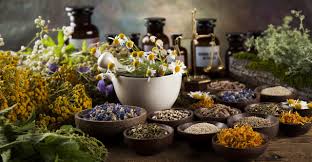
Breaking News
 Is DIY Spray Foam A Scam? I Tested It On A Shed
Is DIY Spray Foam A Scam? I Tested It On A Shed
 Senior Russian General Killed in Moscow Car Bombing
Senior Russian General Killed in Moscow Car Bombing
 Silver's Epic Rally Signals Bitcoin's Imminent Collapse
Silver's Epic Rally Signals Bitcoin's Imminent Collapse
 Tulsi's Assessment That Putin Doesn't Want To Conquer All of Ukraine Is Absolutely Correct
Tulsi's Assessment That Putin Doesn't Want To Conquer All of Ukraine Is Absolutely Correct
Top Tech News
 Travel gadget promises to dry and iron your clothes – totally hands-free
Travel gadget promises to dry and iron your clothes – totally hands-free
 Perfect Aircrete, Kitchen Ingredients.
Perfect Aircrete, Kitchen Ingredients.
 Futuristic pixel-raising display lets you feel what's onscreen
Futuristic pixel-raising display lets you feel what's onscreen
 Cutting-Edge Facility Generates Pure Water and Hydrogen Fuel from Seawater for Mere Pennies
Cutting-Edge Facility Generates Pure Water and Hydrogen Fuel from Seawater for Mere Pennies
 This tiny dev board is packed with features for ambitious makers
This tiny dev board is packed with features for ambitious makers
 Scientists Discover Gel to Regrow Tooth Enamel
Scientists Discover Gel to Regrow Tooth Enamel
 Vitamin C and Dandelion Root Killing Cancer Cells -- as Former CDC Director Calls for COVID-19...
Vitamin C and Dandelion Root Killing Cancer Cells -- as Former CDC Director Calls for COVID-19...
 Galactic Brain: US firm plans space-based data centers, power grid to challenge China
Galactic Brain: US firm plans space-based data centers, power grid to challenge China
 A microbial cleanup for glyphosate just earned a patent. Here's why that matters
A microbial cleanup for glyphosate just earned a patent. Here's why that matters
 Japan Breaks Internet Speed Record with 5 Million Times Faster Data Transfer
Japan Breaks Internet Speed Record with 5 Million Times Faster Data Transfer
Ancient botanicals meet modern science: Essential oils as natural anti-aging allies

Herbalist Erica Kuo, in her latest recommendations, champions essential oils like cistus, myrrh and rose as potent allies for restoring skin elasticity and radiance. Supported by recent studies, these oils target collagen breakdown, free radicals and moisture loss — key culprits behind aging skin. Though not a cure-all, they offer a gentle, holistic approach that aligns with a trend toward natural wellness.
In the news: Five essential oils poised to transform anti-aging routines
According to a 2022 study, cistus oil combats wrinkles by neutralizing free radicals and reducing inflammation, which accelerates collagen degradation. Myrrh, prized for millennia in traditional medicine, stimulates tissue regeneration, while carrot seed oil, rich in carotenoids, shields against UV damage and triggers collagen production. Kuo emphasizes its value for post-menopausal skin: "Rose oil isn't just about beauty — it's biochemically active, addressing hormone-driven skin changes and menopause-related dryness."
The oils, when diluted with carrier oils like jojoba or sandalwood, form serums that smooth fine lines and enhance hydration. Kuo notes, "Geranium oil balances sebum production, offering a natural solution to aging skin's moisture imbalance."
From ancient medicines to clinical backing
Essential oils have been used for millennia. Egyptians infused myrrh in embalming rituals, while rose oil was a prized commodity along Silk Road trade routes. Modern science is now verifying their merits. A 2024 trial revealed that helichrysum — long a European folk remedy — reduced wrinkle counts and sun spots in 85 percent of participants over 12 weeks. The revival of these ancient remedies comes at a time when consumers demand transparency and human-centric solutions amid concerns over synthetic skincare ingredients.
Key ingredients and science: How these oils work
Cistus (Rock rose): Antioxidants combat oxidative stress; anti-inflammatory properties soothe irritation.
Myrrh: Boosts tissue repair, mitigating fine lines and uneven texture.
Carrot seed: Vitamin A and antioxidants defend against sun damage; carotenoids may inhibit collagen breakdown.
Rose: Enhances elasticity and regulates oil glands; anti-inflammatory effects reduce redness.
Geranium and sandalwood: Synergistically hydrate, with sandalwood's emollients firming skin.
A 2025 dermatology review highlighted that rosemary oil's rosmarinic acid protects skin lipids, while its anti-inflammatory properties help stave off photodamage.



